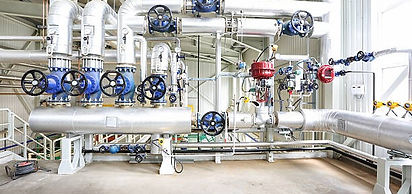
DiVYA
PHONE : +91-8374485831,
Mail : storagetankshy@mail.com
INDUSTRIAL PIPING DESIGN CONULTANCY SERVICES

LPG Piping Design Services
Piping Design Consultants- LPG Piping | Divya Engineering
Piping Design and Drafting: Creating detailed CAD drawings and design calculations for LPG piping systems used in power plants, refineries, and other industrial facilities.
Pipe Stress Analysis: Performing static and dynamic stress analysis using software like CAESAR II to ensure the LPG piping system can withstand operational and environmental stresses.
3D Modeling and Design: Using software such as PDS, PDMS, or Auto Plant to create 3D models of LPG piping systems for better visualization and accuracy.
Isometric/Fabrication/Erection Drawings: Preparing detailed drawings for the fabrication and installation of LPG piping systems.
Support Detail Drawing Preparation: Designing and detailing the necessary supports for the LPG piping system to ensure stability and safety.
Project Management: Managing the entire LPG piping design project from initial conceptualization through fabrication and commissioning.
Compliance with Standards: Ensuring that the design complies with relevant standards such as ASME B31.1 for power piping and ASME B31.3 for process piping.
BILL OF MATERIAL, INSULATION & EXPANSION JOINTS
Challenges Lpg Piping design
Designing LPG (Liquefied Petroleum Gas) piping systems presents several unique challenges due to the flammability, pressure requirements, and safety concerns associated with transporting and distributing LPG. Some of the key challenges include:
1. Flammability and Explosion Risk:
LPG is highly flammable and poses a significant risk of fire or explosion if leaked. Designing the piping system to prevent leaks and ensure robust safety measures is essential. All materials used must be resistant to ignition, and appropriate leak detection systems must be incorporated.
2. Pressure Management:
LPG is stored under pressure to maintain its liquid state, and designing systems to safely handle these pressures is crucial. This includes ensuring proper valve selection, pressure regulation, and the use of appropriate materials to withstand high-pressure conditions.
3. Material Selection:
The piping material must be resistant to corrosion, stress, and potential damage from the pressurized nature of LPG. Materials such as carbon steel and stainless steel are commonly used, but must be carefully chosen to ensure compatibility with LPG and longevity in the system.
4. Temperature Considerations:
Temperature fluctuations can affect the state of LPG (liquid or gas). Systems must be designed to accommodate these changes and prevent any risk of freezing or over-pressurization due to temperature variations.
5. Leak Detection and Prevention:
Detecting small leaks in LPG systems is critical to prevent accidents. Leak detection technologies such as pressure monitoring, gas sensors, and continuous monitoring systems must be integrated into the design to ensure early detection and mitigate risks.
6. Compliance with Safety Regulations:
LPG systems must comply with strict safety standards, such as those set by the National Fire Protection Association (NFPA) and other local regulatory bodies. Ensuring compliance with these regulations in the design process is essential for maintaining safe operations.
By addressing these challenges with appropriate design solutions, LPG piping systems can be made safe, efficient, and reliable for long-term use.



